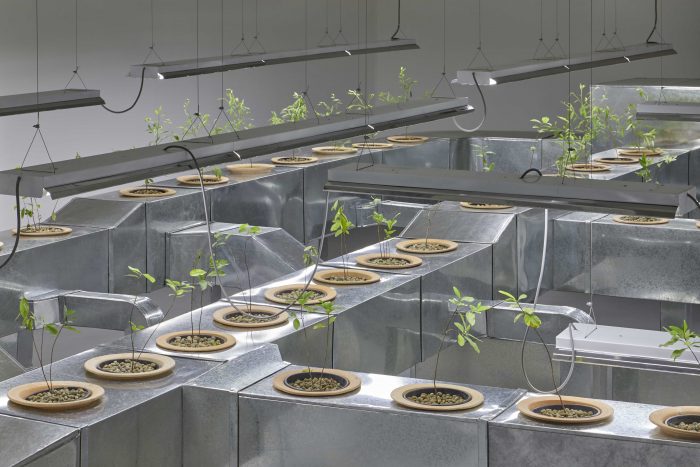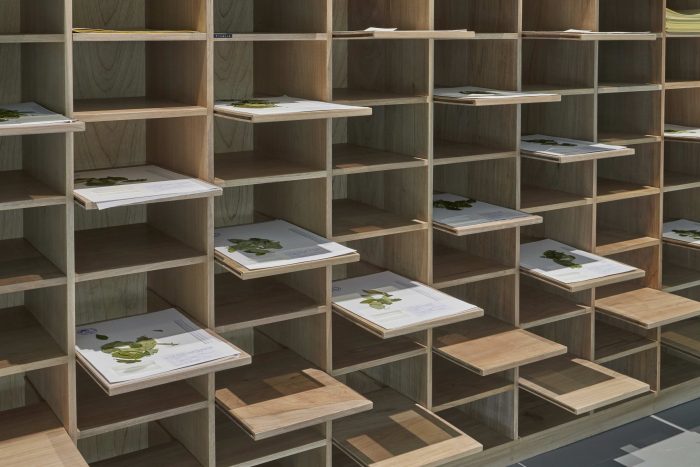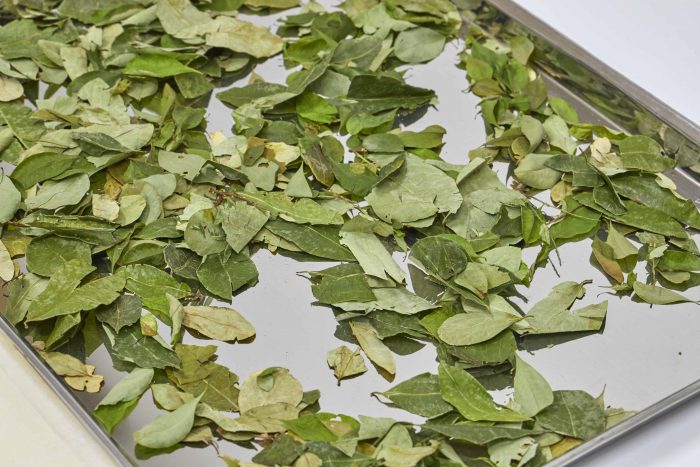Reading time: 4 minutes

19.06.2019
Proyecto AMIL, Lima, Perú
May 3, 2019 – August 3, 2019



Proyecto AMIL presents Botanical Readings: Erythroxylum coca, a project specially commissioned to or by the Peruvian artist Ximena Garrido-Lecca, which will transform the exhibition rooms of the institution into a large botanical laboratory for the cultivation of the most emblematic, and at the same time controversial, plant of Peruvian history: coca.
The exhibition questions the discourses built around this millenary and native plant—both those that reduce it to an exclusive product of drug trafficking, and those that represent it as a sacred and unappealable heritage—to reconsider it as a multidimensional and dynamic actor of our history. That is, as an agent capable of articulating transversal reflections on the relationship between tradition and modernity, nature and science, vernacular and Western medicine, as well as between local policies of cultivation and consumption and the control regimes of the international community.
Around 200 specimens of the coca plant will be grown in a hydroponic system designed by the artist, with galvanized steel ducts and artificial lighting, causing a tension between the scientific framework suggested by these elements and the natural evolution of the plants within Proyecto AMIL. Throughout the exhibition, the public will be able to observe the industrialized process of coca cultivation, from germination to harvesting of the leaves. However, once this procedure is completed, a series of ‘non-scientific’ practices, related to the ritual use of the plant, will be activated challenging the way in which Western knowledge is constructed.
Taking up the divinatory tradition of pre-Hispanic curanderismo—which neither the colonial nor the republican experience managed to eradicate—a group of researchers from the Institute of Oriental Metaphysical Sciences – ICMO, will offer coca leaf readings to the public in a private space. Afterwards, a group of students from the National Agrarian University of La Molina – UNALM, will record the readings as botanical herbarium. Although the anonymity of the participants will be preserved, the “reason for consultation” will be registered, so that it finally serves as the criterion for classification and ordering of the herbaria in a botanical cabinet.
Through the mobilization of the traditional and political meanings of the coca leaf in the public arena, Botanical Readings: Erythroxylum coca acknowledges the historical and social role of the coca plant, as well as its healing, spiritual and economic powers. The result is a new hybrid system of significance, a cross between Peruvian vernacular culture and modern science, which is both futuristic and atavistic; and from which it is possible to apprehend the heterogeneity and the syncretism that characterizes societies which are in the cultural and political peripheries of modernity.
—
Ximena Garrido-Lecca (Lima, 1980) lives and works between Mexico City and Lima. She studied Fine art at Universidad Católica del Perú and completed an MA at Byam Shaw School of Art, London. Her solo exhibitions include Lines of Divergence, Galerie Gisela Capitain, Cologne (2018); Native States at MALBA, Buenos Aires (2017); Botanical Insurgencies: Phaseolus Lunatus at SAPS (Sala de Arte Público Siqueiros), Mexico city (2017); Smoke Architecture at 80m2 Livia Benavides, Lima (2015); Toma de tierra at Casado Santapau, Madrid (2015); Los Suelos, MATE (Museo Mario Testino), Lima (2014); Paisaje Antrópico, Max Wigram Gallery, London (2012); a solo project at Middlesborough Institute of Modern Art (2012); El Porvenir, Mimmo Scognamiglio Arte Contemporanea, Milan (2011). Her recent group exhibitions include: Cosmopolis # 1.5: Enlarged Intelligence, Centre Pompidou at Chengdu (2018), Entangled: Threads & Making, Turner Contemporary, Kent (2017); Zigzag Incisions, CRAC Alsace, Altkirch y SALTS, Basel (2017); The Late Shift, Frac des Pays de la Loire, Carquefou (2016); Why are we afraid of sunsets? Gdansk City Gallery (2016); 62nd International Short Film Festival Oberhausen (2016); Territorio, povoaçao, C. LAB Mercosul, Sao Paulo (2016); Invideo, 26th International Exhibition of Video and Cinema, Milan (2016); United States of Latin America, MOCAD (Museum of Contemporary Art Detroit) (2015); 10th Mercosul Biennial: Messages from a New America, Porto Alegre (2015); MDE15, Historias locales, prácticas globales, Museo de Antioquia, Medellín (2015); Future Generation Art Prize, Pinchuk Art Centre, Kiev (2014); Bienal de la Imagen en Movimiento (BIM), Buenos Aires (2014); Bienal de Cartagena de Indias (2014); The Central Academy of Fine Arts Museum Biennale, Pekín (2014); Ir para volver, 12th Bienal de Cuenca (2014); International Biennale of Arezzo (2013); LARA: Latin American Roaming Art, NC Arte, Bogotá (2013).
—
General production and project coordination: Jana Ugaz / Production of hydroponic system, cultivation and maintenance of coca plants: Gonzalo Herrera & Gonzalo Velasco de Plantar and Soluciones Verdes / Duct system manufacturing: A&T industrias en acero SAC y JC ductos / Specialized advice: La Empresa Nacional de la Coca – ENACO / Acknowledgments from the artist: Margarita Campos, Yessica Bruno, Milagro Alama, Mibeldy Marcelo, Kelly Andia, Claudia Molina, Nino Huarcaya, Fanny Meléndez, Alejandro Moncada
—
Comments
There are no coments available.